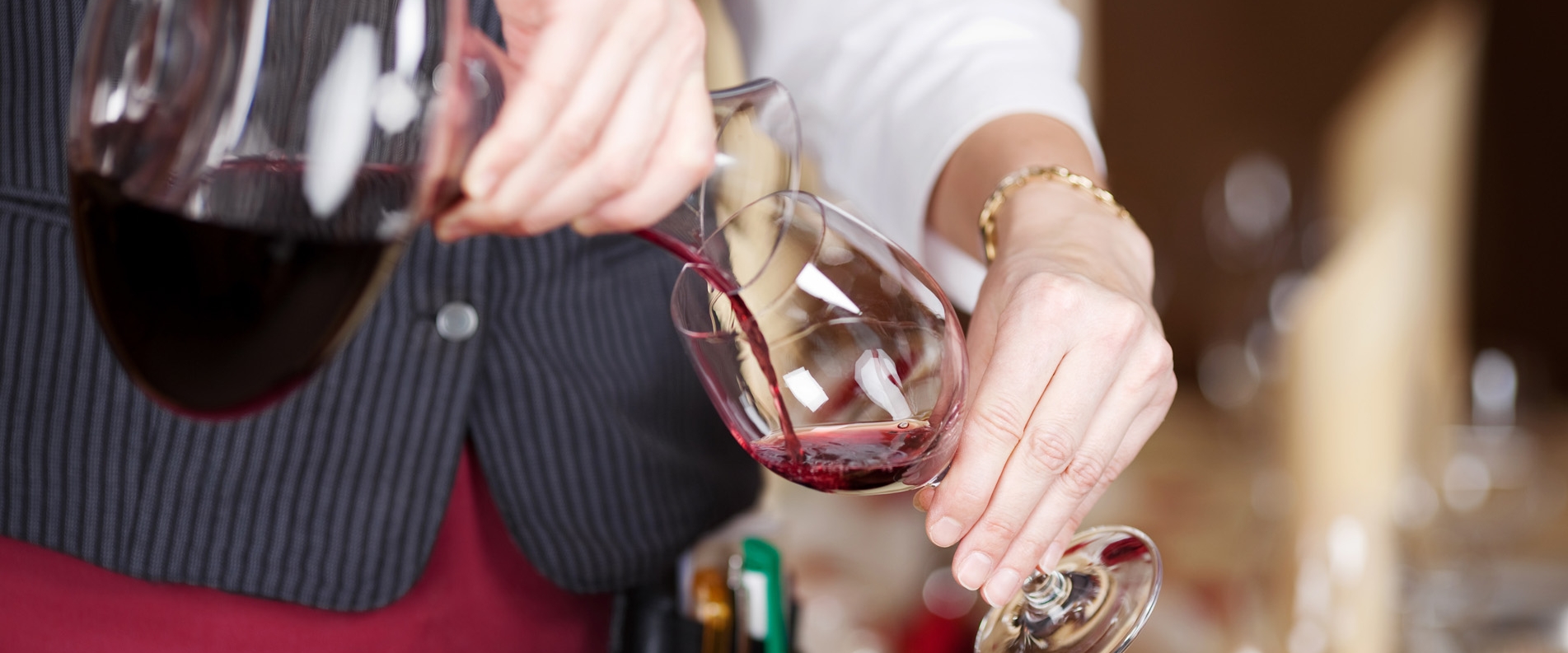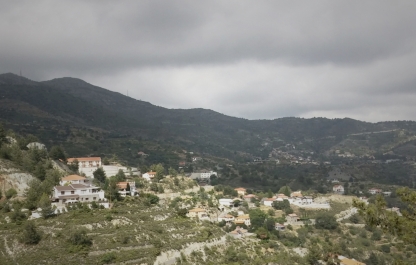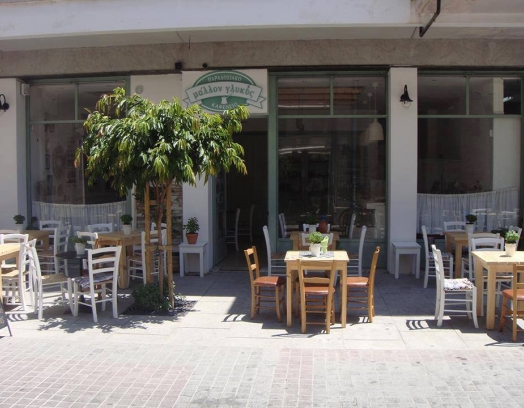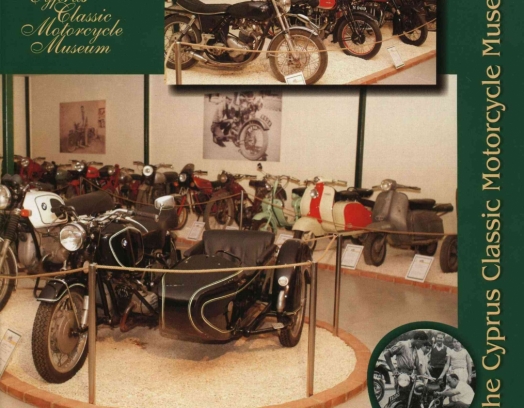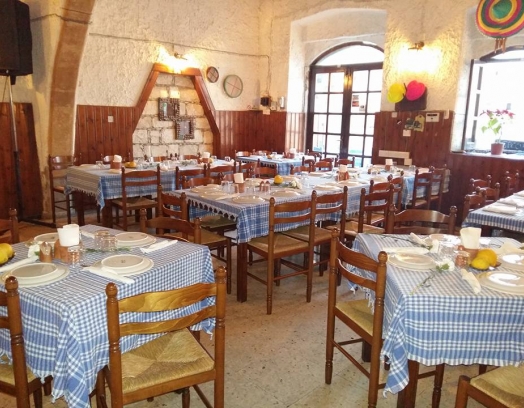Whether you are a connoisseur or just a lover of good wine, also known as the «nectar of the gods» across Cyprus and the ancient world, getting up close and learning more about local winemaking traditions is an unforgettable adventure. The art of winemaking (and drinking!) is a way of life in Cyprus and is deeply embedded in the national psyche with roots that run deeper than the vines on the mountain slopes.
We have put together our own overview with all the hints and tips you need to go on your own adventure for a day... following in the footsteps of Dionysus! It’ll also help you seek out and experience one of Cyprus’ treasures: the bountiful gifts from their sun-soaked vineyards.
You’ll be able to draw up your own route and mark all the places to visit on the map. It’s best to plan a couple of days for this: one for exploration and wine-tastings, and the second for quite literally «drinking it all in» and resting up after your indulgences!
-
There’s no doubt that human creations leave an imprint on their creators and in the history of civilizations and culture winemaking holds a special place among other important phenomena.
Classic wines — young or aged, vintage and collectible — have held their place as one of the most popular drinks for centuries and its’ clear why.
After all, they are easy and pleasant to drink and make a great addition to any table, be it a solemn affair or just a friendly get-together. This is all thanks to their bold flavours, satisfying aftertaste and low alcohol content; as well as the extensive selection available on wine menus and in boutiques.
Cyprus is one of the oldest wine-producing regions. It is in the Mediterranean basin: the former cradle of the wine-making civilization. Growing grapes and producing wines were a part of life, an important element of culture, art and even religions — from paganism and cults to Christianity. At some point wine and vines dripping with ripe bunches went from being something practical, something from daily life, to become a symbol of life and fertility, the promised land. They later gained spiritual significance, symbolising Jesus Christ, Communion, and Paradise in the early Christian era.

What’s more, there aren’t many places as suitable as Cyprus for growing delicious grapes. The mixed soil, year-round Mediterranean sun, and the mild, subtropical climate makes Cyprus an ideal place to cultivate various grape varieties and produce high-quality wine.
In Cypriot oral tradition and ancient art, winemaking is linked with the god Dionysus, known and loved by all from Greek mythology.
The Legend of Dionysus
The son of Zeus and Semele (the daughter of King Cadmus), Dionysus was carried in the thigh of his almighty father, was born and grew up, then appearing in different countries (and myths) accompanied by a procession of maenads and satyrs armed with a thyrsus made from woven vines. He also appeared in ancient Greece (his name was mentioned on Cretan Linear B tablets as early as the 14th century BC), and in Syria and Asia, even reaching India.
Dionysus also made his way to Europe via Thrace. Everywhere he went, he taught the people viticulture and winemaking and this is believed to be the origins of civilization: for example, even the appearance and development of city-states in archaic Greece in the 8-6th Centuries BC is linked to his cult. Dionysus married Princess Ariadne after she had once been cruelly abandoned by Theseus on the Greek island of Naxos.
Meanwhile, the so-called agricultural cult of Dionysus, which spread far and wide in ancient times, which was once heralded by joyful feasts and fun, eventually transformed into unbridled bouts of drinking that often led to phrenetic orgies and bacchanalia, especially during the Roman Empire. In fact, in Rome, Dionysus was called Bacchus or Liber (which means raucous and free).
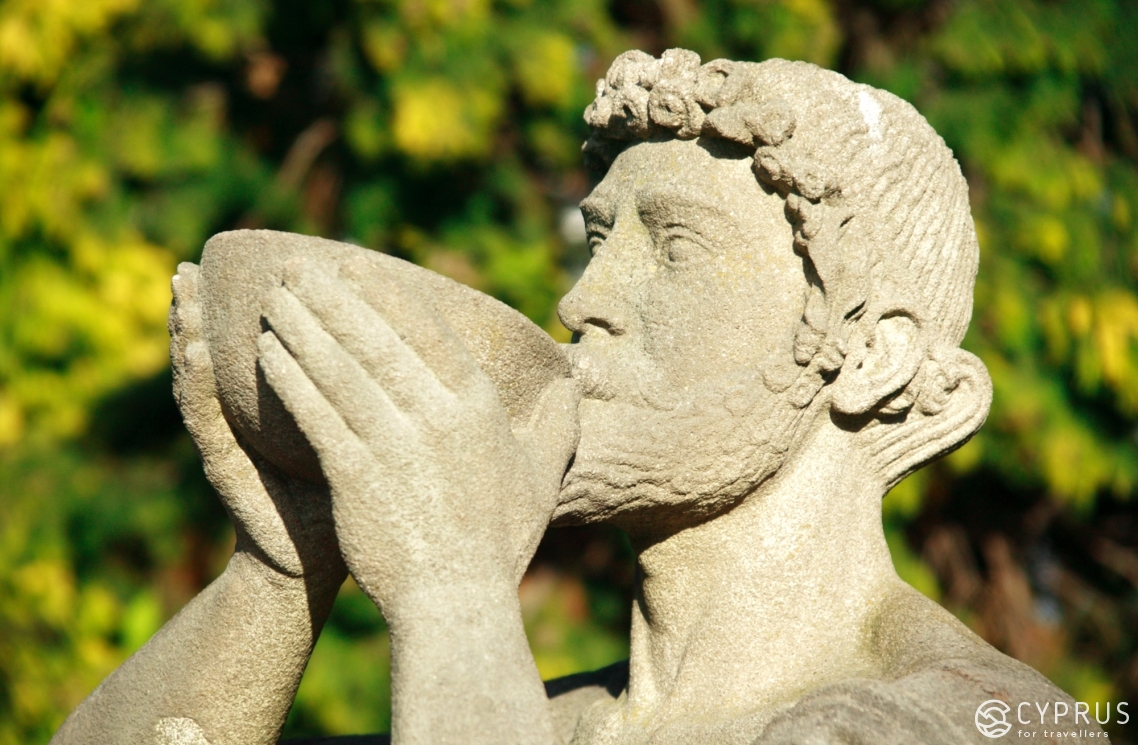
In any of his incarnations, Dionysus was of the God of grapes and hops. He was accompanied be a panther, lynx, tiger, donkey, dolphin and goat (not including his entourage of the bacchantes and satyrs, of course). The cult of Dionysus was replaced or merged with the cults of local deities and heroes over time. In Hellenism, he was oft personified as the Phrygian, Sabazios (the supreme god and the progeny of the Great Mother Goddess). In Delphi, he was worshipped along with Apollo. The indomitable Dionysus even made it into the 12 Olympians, although somewhat later.
Incidentally, the religious and cult rites devoted to Dionysus gave rise to ancient Greek tragedy (from the Greek «τοτραγούδιτράγους», literally «goat song»).
Historians (for example, Dr. A. F. Losev in his Mythological Dictionary, 1990) have made particular note of the fact that Dionysus is the personification of the visceral and uncontrollable in nature and people, and is in opposition to Apollo, the image of orderliness, arts and aristocracy thus giving rise to the «struggle between the Dionysian and Apollonian principles».
In the Annals of Antiquity
There are a number of archaeological finds (a particularly clear example being the famous albeit not the oldest mosaics found in a Roman villa from 2nd century BC in Paphos), records, and descriptions from ancient sources and literature (for example, the works of Hesiod, 800 BC) that prove that winemaking is a long-standing tradition in Cyprus. So much so, that its origins cannot be traced.
One thing is for certain: Cypriot wines have enjoyed renown around the world for about 6 thousand years!
In 1932-35, a team led by the «father of Cypriot archaeology», Dr. Porphyrios Dikaios, then working as the curator of the Archaeological Museum (Cyprus Museum) in Nicosia carried out exploratory surveys near Limassol (Erimi village) where fragments of 18 ceramic wine flagons (amphorae) dating back to 3500-3000 BC were discovered. This find was declared the oldest evidence of early winemaking in the entire Mediterranean basin, which would later spread to modern-day Greece, Italy and France.
Locally-produced Cypriot wine is mentioned in ancient sources under the name «nama» and is known for its mahogany colour and sweet taste. The Greek poet, Hesiod, sang the praises of it in his works! This «nectar of the gods» was also exalted in the works of Pliny the Elder, Seneca, Euripides, Hesiod and Stasinos.
Historians concerned with winemaking and those who collect traditional recipes are particularly interested in the ancient descriptions of the specifics of nama production [1], as the drink has long been highly value for its strong, very sweet flavour, and rich aftertaste. It was widely exported from the island and was a welcome addition to the tables of Greek and Roman nobles. It was appreciated even earlier in Egypt.
It is of particular note that in 2005, a group of Italian scientists led by Dr. Maria-Rosaria Belgiorno analysed the finds made by Dr. Dikaios and identified traces of tartaric acid, which confirmed the previously posited theory put forward by Cypriot experts that the amphora was indeed 5.5-thousand years old.
Further insight was gained by scientific research and analysis of the contents of shipwrecked vessels discovered in 1999. The boats had sunk sank off the coast of Cyprus in the 23rd century BC during a storm (similar to the famous Kyrenian shipwreck). It had been transporting over 2500 amphorae of wine to Egypt from Cyprus. The research confirmed that local winemaking had developed to such an extent that it had achieved a strong foothold in international trade What’s more, analysis carried out on other vessels dating back to the Neolithic and copper age, meant a number of scientists were able to confidently assert that the first Mediterranean wines were made in Cyprus.
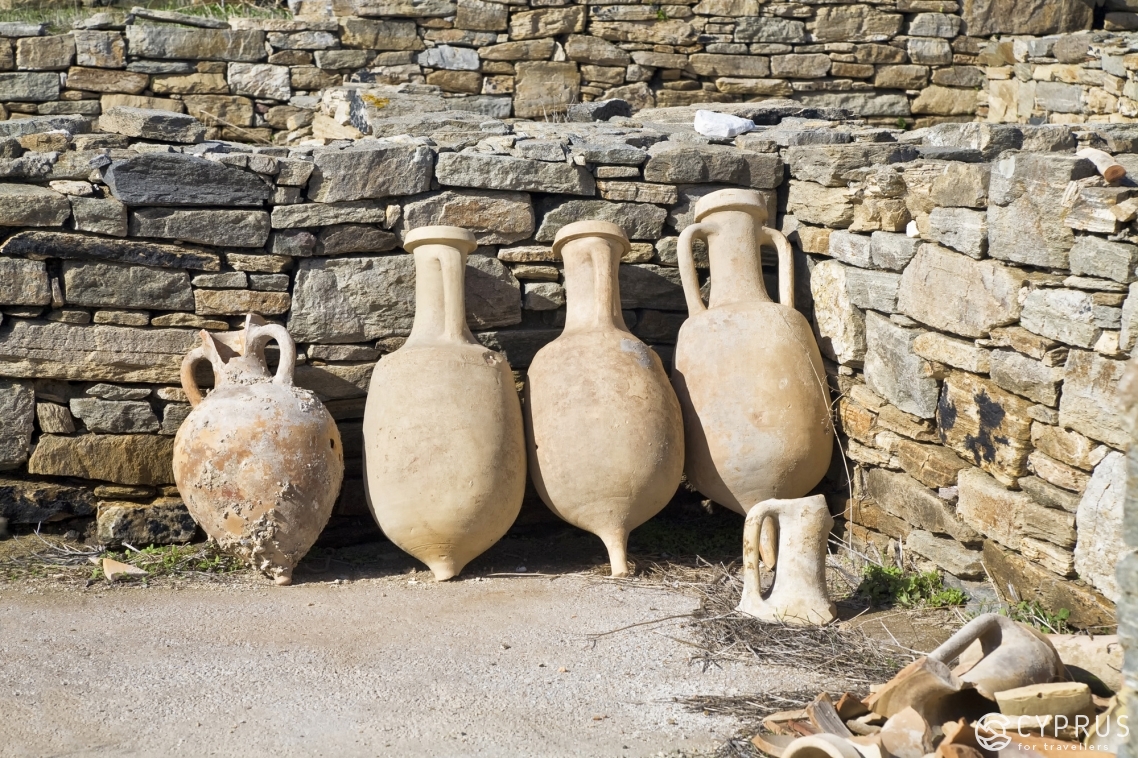
Let’s not forget about the 2005 discovery of ancient perfume production in Pyrgos-Mavroraki. Evidence of wine production was found nearby. Dr. Belgiorno discovered the world’s oldest perfumery dating back more than 4000 years at this ancient settlement site.
The excavation site of the ancient factory was about 1 sq.km. The buildings discovered were identified as having been laboratories and workshops. There’s no doubt that wine was an important part of the Pyrgos perfume production process: archaeologists found remains of other buildings in the same complex where they also produced wine alongside perfume. At the excavation site, wine flagons were found and even grape seeds had been preserved.
However, there’s more: ancient presses [2] and ceramic wine vessels were found in the villages of Omodos and Lania (as well as others on the island), with their manufacture dates hand-carved on them by the potter. Alongside them, numerous antique amphorae and other artefacts linked with Cypriot winemaking were unearthed. They have gone on to enhance the collections of both the local Cypriot museums as well as major exhibitions worldwide.
In 2006, the Government of the Republic of Cyprus funded a wonderful exhibition and scientific conference entitled 6000 years of Cyprus wine culture.
Looking a little later...
-
Cyprus’ medieval history has strong ties with the famous Cypriot wine, Commandaria. The development of local winemaking in that period is an important chapter in the local political and economic history. It dates back to 1191, when Richard the Lionheart, King of England, sold the island to the Knights Templar Order. Under Lusignan rule, Cyprus already had clear links with the Crusader states and the French aristocracy. The Knights of the Order founded their stronghold in the town of Kolossi, i.e. their headquarters where their Grand Commander resided.
It is generally believed it was the arrival of the knights in Cyprus that precipitated the transformation of ancient Nama into Commandaria. The secret of its taste lies in combining significant amounts of sugars and tannins (binding agents), which lends the drink its characteristic rich fusion of sweetness with an undertone of astringency. To this day, this base flavour is complemented by notes of raisin, caramel, honey and cinnamon.
Back then, all the vineyards of the area around Kolossi and even the people of the 15 villages, which included experienced winemakers, belonged to the Order of the Crusaders.
The climate near Kolossi Castle is rather unique within Cyprus with its hot, dry summer and cool winter. The grape harvest was left in bunches to dry in the sun for a week then it was sent to be pressed. The resulting mash was poured into clay jugs, which were buried in the ground «up to the neck».
In 1224, the so-called Battle of the Wines was held in France. It was a royal feast, thought up by the then ruler Philip II Augustus (1165-1223, king from 1180) whose idea involved an extensive wine-tasting of the most famous sorts in order to choose the best. As it happened, the choice of the attendees was naturally a Commandaria. This staggering event was the source of inspiration for a poem by the medieval artist from Normandy Henri d'Andeli entitled «La Bataille des Vins».
Soon, Commandaria became exclusively available to the rich and noble, ceasing to be an everyday drink for ordinary Cypriots. It also started being exported to the rulers of various countries. A cheaper sort was produced for use during church liturgies.
-
In 1363, England caught on and took inspiration from the French. The then mayor of London, Henry Pickard, also held a «feasting tournament» in the city, which went on to be known as the Banquet of the Five Kings. Monarchs from England, France, Scotland, Denmark and Cyprus were invited to taste various drinks. Commandaria was once again the victor among other competitors produced in different countries. Since that day it was a long-standing tradition for every single noble or royal wedding to involve Commanderia.
It was this very event that brought about the creation of the best Cypriot brandy brand, Five Kings.
The 15th century saw the first export of the indigenous Xynisteri and Mavro grape varieties used in the production of Commandaria to Madeira, Portugal. Therefore, the sweet dessert wine from the vineyards there basically evolved from Cypriot Commandaria.
By this time, Cyprus had been exporting to France, Italy (Venice and Genoa), Egypt, Syria and a number of other countries for centuries.
-
The era of the Ottoman Empire rule over Cyprus had a negative impact on winemaking and on viticulture in general. While it was possible to find references to Cypriot wines towards the end of the Venetian era and in the early days of Turkish rule, for example, in The World's Most Famous Isle (1576) by the Italian scientist and writer Tomasso Porcacchi, which speaks of their «fine flavour, aroma and health benefits», the situation would soon change dramatically: despite the fact that individual wineries survived, the industry as a whole fell into decline due to excessive taxes and Muslim traditions being introduced to the local population.
Further references can be found in the travel notes of those like Cyrus Redding made in 1851 that reveal that winemakers were even forced to hide how much wine their harvest had produced from their neighbours, all the while putting in a lot of effort and time into growing more grapes and making more wines ... which had a detrimental effect on the quality of their produce.
Therefore, this forced semi-underground artisanal and home-made wine production went on in Cyprus everywhere for a long time. It continued until 1844 when the first ETKO industrial winery was founded (under British influence to a certain extent). It is now one of the famous Cypriot Big Four but in those days was a private enterprise run by the Hadjipavlou family.
-
Soon thereafter in 1878 when Cyprus became part of the British Empire, there was a fresh impetus for the revival of winemaking. What’s more, Cyprus was given a boost by the fact that the phylloxera epidemic broke out in Europe at the end of the 19th century affecting European vineyards en masse. Cypriot wines very quickly took hold on the international arena and went on to earn European and worldwide recognition.
Cyprus’ position on the global wine market was further strengthened by the fact that European winemakers decided to splice their varieties with American ones in the hopes of fending off another epidemic. However, the stronger vines yielded a grape that no longer met the accepted standards in flavour. The new vine’s characteristics differed from the original European vine, Vitis Vinifera.
All the while, Cyprus time continued to produce high-quality wines that stood up to the original standards.
-
In the early 20th century, the demand for Cypriot wines increased. The main market was the UK, France and the Middle East. Cyprus’ secret to success was that it produced cheap, high-quality wine and other alcoholic beverages, the most popular being its local brandy.
Later, the KEO companies were founded in 1928 by a group of Cypriot businessmen under a British businessman called Chaplin. The main competitor, ETKO, were then purchased by his private winery.
In 1937, Cypriot sherry entered the world market. It was primarily exported to Northern Europe.
In 1943, there was a trade union strike by ETKO workers which resulted in the company becoming a cooperative; meanwhile, another major company, LOEL, was founded. SODAP followed in 1947. All these companies are members of the Big Four and are still the largest wine producers in Cyprus to this day.
By the 1960s, over half of the local drinks produced by LOEL and SODAP were exported (mainly to the Soviet Union and the UK). Back then, European consumers preferred the local high-quality sherry (sherry: fortified white wine) that they could buy at a bargain price. This period also saw a fashion for sparkling wines and Cypriot Shiraz also made a name for itself.
The two indigenous red and white wine grape varieties, Xynisteri and Mavro, were still predominantly cultivated in the 60s. Together, they accounted for up to 90% of all cultivated vineyards. The remaining 10% included other varieties such as the white Malaga, Spurtiko, Canella, Promera, and Morocanella; and red Lefkada, Vluriko, and Ophthalmo.
In 1970, some varieties from Italy, France and other countries were imported to Cyrpus at government level. The most popular of those that appeared on the market were Palomino, and Noir (Grenache and Carignan). The range continued to expand in later years and other varieties gained a presence, including: Riesling, Cabernet, Merlot Noir and others.
It is of note that a study of the United Kingdom’s fortified wine market conducted by British scientists in 1978 showed that the Cypriot sherry, Emva Cream (ETKO), was the No. 1 brand in terms of recognisability and popularity.
In the following years, the situation chances and there was a drop in demand for the Cypriot wines that had once enjoyed immense popularity. This could be mostly be explained by changes in consumer tastes, new taxation rules, and EU regulation (from 1996). From that point on, only Spanish sherry, a hearty wine with a high alcohol content, produced in Jerez de la Frontera, could carry the name Jerez.
-
Returning to Cyprus, in 1980, the government introduced three main reforms aimed at improving the quality of local wines:
- New grape varieties were introduced: Cabernet Sauvignon, Palomino, Cabernet Franc, Muscat and Chardonnay, etc.
- State support for small local production: they were provided with additional financing. That meant the grape harvest could be processed on site and didn’t have to be transported to major wineries thus maintaining the high quality of the raw materials.
- In 2007 (following the Republic of Cyprus’ accession to the EU), an appellation system was introduced. It is a set of rules that govern the monitoring of wines, their production and quality on a regional basis.
-
There arecurrently three accepted categories of wines in Cyprus:
- Table wines (young wines), reminiscent of Vin de Table in France and Vino di Tavola in Italy. They are usually around 12% ABV. The vineyards that produce the varieties for these wines are near the coast. They are particularly abundant around Pissouri.
- Local wines (Greek: ΕπιτραπέζιοςΟίνοςμεΓεωγραφικήΈνδειξη). These are the equivalent of the French Vin de pays or Italian Indicazione Geografica Tipica. The rules state that 85% of grapes used to produce the wine must originate from registered vineyards in particular geographical areas and the vines should be over 4 years old. They are usually about 10% ABV. The grapes for these wines are cultivated on the southern incline of Troodos at an altitude of 250 to 1300 metres above sea level. There are designated «specially trained staff» from the Wine Products Council that ensure strict adherence to the rules.
- Protected Designation of Origin (PDO or, in this case, OEO, from the Greek: ΟίνοιΕλεγχόμενηςΟνομασίαςΠροέλευσης). This is a scheme under which products with a clear origin, authenticity, and strict recipe are registered and protected. This is the most prestigious category with the highest quality products. It is based on the French Appellation d'origine contrôlée. Wines in this category must be produced using grapes originating from registered vineyards and cultivated at an altitude of 600 to 750m above sea level (depending on the variety and area). The vineyards must also be no less than 5 years old. There are 4 regions in this category: Akamas Laona, Vouni Panayias — Ambelitis, Pitsilia, and Limassol, where the mountain grape varieties are grown at the highest altitude. For example, the vineyards around Madari Mountain are at an altitude of 1600m above sea level.
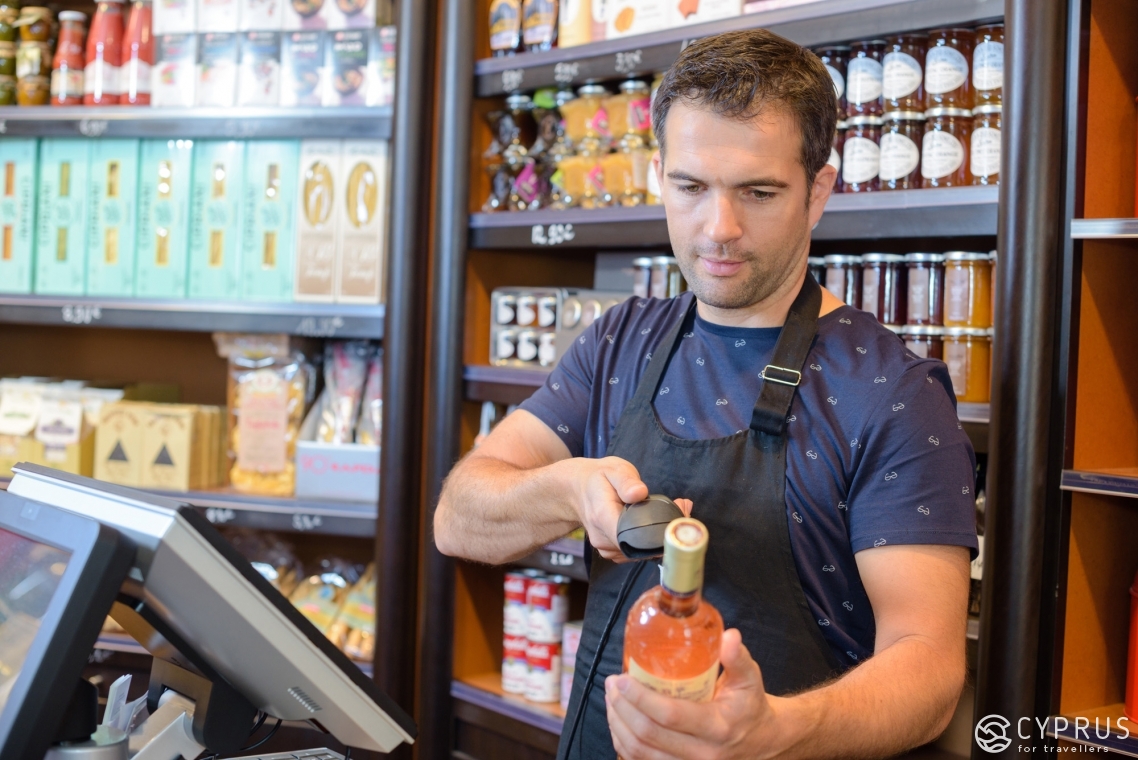
These days, winemaking is one of the mainstays of the Cypriot economy: it provides jobs and is a source of steady income for the state budget.
Over a hundred grape varieties are grown in Cyprus. Varieties that were around in ancient times are still cultivated to this day. Whole villages of winemakers still produce wines using ancient, traditional methods. All the while, the Cypriot wine industry is constantly developing. It has been greatly modernised which has led to an increase in production volumes. Of course, while some of the wines produced by the Big Four and other small brands are exported worldwide, they can also be found in supermarkets all over Cyprus.
Winemaking Regions and Wines
Paphos. There are 15 wineries nearby, including the famous Chrysoroyiatissa Monastery, which also specialises in Commandaria.
Limassol is also a significant winemaking region. It boasts wineries of the Big Four as well as a number of small family distilleries. Including those in neighbouring Paphos, there are about 50 wineries in operation in total.
Both regions are the leaders in terms of grape harvest.
Larnaca and Nicosia. The surrounding valleys are famed for wines with the most exquisite taste and excellent quality. There are only 4 wineries.
The remaining three regions are also renowned more for their vineyards than winemaking itself.
Akamas-Laona. On the northwest coast of the island, it includes 6 villages.
Vouni Panayias – Ambelitis. The western mountainous region with vineyards at an altitude of 800 metres above sea level.
Pitsilia. A large region on the slopes of Troodos (a mountain formed 90 million years ago with the highest point in Cyprus, Mount Olympus, at 1952 metres) with an area of 61,000 hectares.

Cyprus’ Best Wines
Tourists to Cyprus are often interested in finding out which local wines are the best and which ones to buy as a souvenir.
Cyprus produces dry white, rose and red and fortified wines (muscat, malaga, sherry and, of course, port) so it is worth reading about some of them.
Indeed, the end result depends less on the variety and more on the terroir (a combination of various factors: from climatic and soil characteristics to the production methods), on how artfully the wine is blended and, of course, on time-tested methods. The best Cypriot wines commonly have a high sugar content, nevertheless they are not sickly sweet.
Let's start with the «Queen of Cypriot Wines», Commandaria [3].
Commandaria (KEO and ETKO, 14-16% ABV), is Cyprus’ famous dessert wine. The grape varieties for its production have always been grown in Kolossi: they are Xyneristeri (white), and Mavro (black). These days, the wine is aged in oak barrels for at least two years which results in its customary rich flavour.
There are several brands that produce commandaria: St. John and St. Nicholas are the most popular. There are other, more exclusive, unique brands. For example, there is an excellent quality so-called vintage Commandaria. St. John has its own vintage version that dates back the 14th century and St. Nicholas has Centurion from 1991 and 2000. These are very expensive varieties. Luckily, it’s impossible to confuse them with others because of the exclusive design of their labels and bottles, which differ markedly from the usual variety. Centurion Commandaria by ETKO is an exquisite dessert wine with a rich bouquet and a dominant honey tone. It is produced according to an ancient recipe and held in oak barrels for many years. It has won numerous awards both in Cyprus and abroad.
What’s more, each of the brands has its own particular market. The cheapest varieties of dessert wine have long been used in church liturgies (i.e. Nama).
You can find out more about Commandaria here.
Connoisseurs assert that Commandaria is ideally suited as both an aperitif but can also be enjoyed with fruit, cheese and various desserts thanks to its rich bouquet and mild taste. This wine is both a wonderful holiday gift as well as serves well as a warming, exciting drink for a romantic dinner [4].
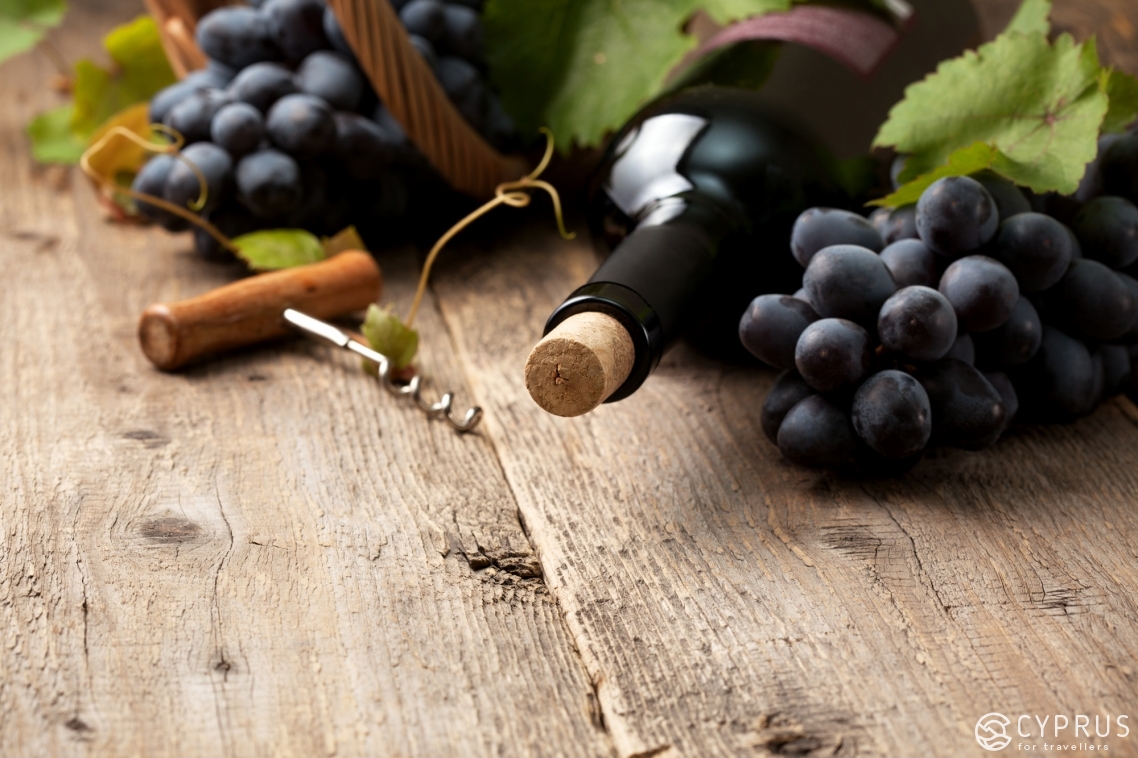
Bellapais (KEO, 11%) is one of Cyprus’ sparkling, semisweet wines and is similar to French champagne. The brand was named after the medieval monastery that once also produced wine. It is believed to be a «summer» wine. It is especially refreshing and pleasant to drink on a hot day. It can be served with halloumi cheese and fruit. It is aromatic with medium-golden hue.
Other sparkling wines are also very popular: Mediterranean Breeze (LOEL) is a sweet variety which suits light desserts and is perfect for a romantic dinner. In contrast, Duc de Nicosie (KEO) is a classic dry white wine with a delicate aroma and pleasant taste.
As we wrote above, the varieties indigenous to Cyprus are rated the most highly among local wines. For example, Xynisteri, a white dry wine (KEO, 12%) is wonderfully refreshing thanks to its mild taste. It makes a great addition to salads, white meat dishes, and seafood.
Thisbe (KEO), a semi-dry white wine with a fruity palate and a note of grapefruit has been showered with praise. It should be served well chilled with salads, fish, poultry, or as an aperitif.
Aphrodite (KEO, 12%) is traditionally considered a «ladies drink». It is a white semisweet wine with a classic, light taste. Connoisseurs suggest drinking it slightly chilled with fish or seafood dishes.
Alkion (KEO, 11.5%), a semi-dry wine with a delicate taste and fruity aroma, is an ideal accompaniment to fish, white meat and cheese.
Chardonnay and Xynisteri (KEO, 13%), is a dry white wine with a golden hue and an exquisitely balanced taste with hints of lemon and white peach brought about by being aged in oak barrels. It ideally suits seafood, pasta, grilled chicken, and salads.
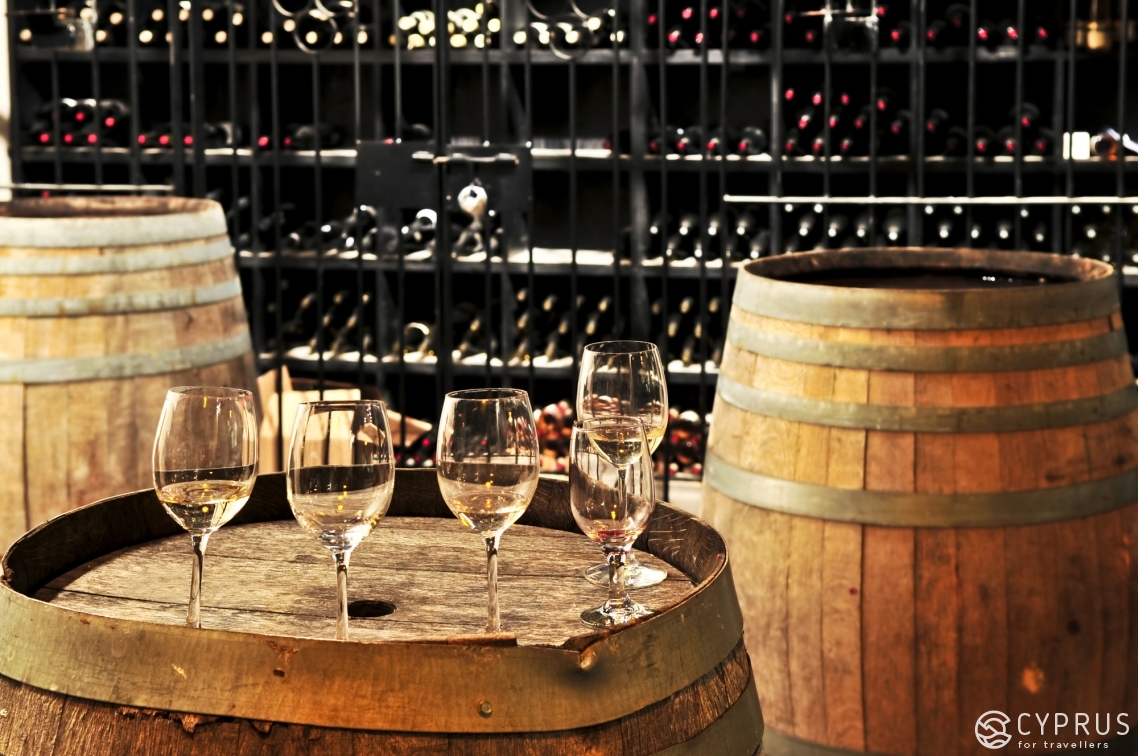
In fact, many connoisseurs have pointed out that vine varieties imported from other countries’ vines cultivated in the hot Cypriot sun produce sweeter grapes, which make excellent wines. These wines often exhibit aromas of garden and forest fruits, and boast notes of lemon and honey, and have herbal undertones. Even classics such as Shiraz, Riesling and Chardonnay feel different in Cyprus.
Kthma Xatzhpavlou Shiraz (ETKO, 13.5%) is a wine made from the Shiraz grape grown in ETKO’s own vineyards. Before reaching the table, this wine is aged for several months in oak barrels in the village of Omodos. It is an ideal accompaniment to pasta, poultry, as well as mature cheese and red meat dishes. Serve slightly chilled at up to 14-16 °C.
Ayios Onoufrios (13.5%) is a dry red wine made from the local Xynisteri grape.
Kyperounda Shiraz and Kyperounda Alimos Chardonnay are a 14% ABV red and white wine. Both are produced by KTHMA Kyperounda.
Agios Ilias (Chrysorrogiatissa Monastery) is a blended dry red wine. It is made by combining three varieties: Cabernet, Maratheftiko and Grenache. It is perfectly suited to Mediterranean cuisine and is a staple of Cypriot wine, known by all tourists to the island.
Maratheftiko Kolios (Kolios Winery, 14%) is also worthy of mention among the red dry wines on offer: it is an exclusive wine that is difficult to track down both in Cyprus and abroad because it is produced in small batches: around 2000 bottles a year. Its rich, sumptuous taste is characterised by tones of truffle, oak, vanilla and forest berries. It is best suited for a dinner party or a special occasion and is an ideal accompaniment to Cypriot or European meat dishes.
Incidentally, KEO also produces its own Heritage Maratheftiko with a 13% ABV. It is a dry red wine with a rich ruby colour and an aroma with notes of forest berries. It is best drunk at room temperature and served with steak and other red meat dishes.
Othello (KEO, 12%) is a popular dry red wine with a so-called «male character». Its production involves solely indigenous grape varieties. It boasts a fruity, spicy aroma with a light woody note thanks to being aged in oak barrels. However, when bottled, it becomes slightly sweet as it further ages (provided you don’t open it). Connoisseurs recommend drinking wines over 3 years old.
It is perfect for meat and game dishes.
Other dry red wines include Saint Ambelion (13.5%) and D'Ahera (both produced by KEO). They have a rich taste with a fruity aroma. They are often served with meat dishes (steak, meze), or with poultry and game. It is best served at room temperature in order to enjoy the well-rounded taste.
Saint Panteleimon (KEO, 13.5%) is a perfect example of Cypriot semi-sweet white and red wines that have made a name for themselves abroad. It is served at parties with dessert cheese, fruit or canapés. It is ideal as an aperitif before lunch. This wine is very light and will not leave you feeling light-headed, rather it peps you up.
It is drunk slightly chilled in order to reveal its light floral bouquet.
Coeur de Lion (KEO) is one of Cyprus’ best rose wines. It is dry with a rich fruit and berry bouquet that encompasses strawberry, black cherry and peach. It is best served with fresh fruit or cheese and perfectly suits grilled meat, and poultry.
Its aroma and flavour come alive at room temperature. However, if you wish to enjoy it as an aperitif, it is best served slightly cooled.
Please note: most sommeliers recommend rose wines as an accompaniment to Cypriot cuisine.
The Shiraz Tsangarides rose (by Tsangarides Winery) is another stop on our wine tour as it is the quintessence of Cypriot flavours. Its bouquet boasts nuances of red berries and roses and when you take a sip it feels almost sparkling thanks to its increased acidity. It has an intense, deep palate with hints of spices, and cherry as the dominant overtone. 13% ABV. It is ideal as an aperitif with light snacks and perfectly accompanies Asian (in particular Chinese) cuisine.
EMVA Cream Liqueur (ETKO, 12%) is a fortified drink with a light yet sumptuous flavour. Incidentally, it’s very popular in Northern Europe and, judging by the reviews, they tend stock up on it for Christmas.
For those who like something a little stronger…
One of the best fortified wines (once called Jerez) produced in Cyprus is Fino (KEO, 18%), a white sherry made by adding two key ingredients to white dry wine: local brandy strength, and vintage Commandaria for sweetness. It is then aged in oak barrels. LOEL also produce exquisite, unique sherries.
Five Kings (KEO, 40%) is the Cyprus’ best brandy and is made from the Xyneristeri grape. It is twice distilled and aged for at least 15 years and thus has a well-developed palate and rich aroma. It is an ideal dessert wine to bring your dinner to a close. It is best served in a round brandy glass in order to bring out its deep flavour and bouquet.
Tip: you can find out more about the inner workings of Cypriot winemaking here.
Winemaking and Tasting
It’s no secret that Cyprus are putting a lot of effort into developing their wine tourism. Over the past 20 years, there has been a visible rise in the number of small «boutique» wineries such as Hadjiantonas Winery and Tsiakkas Wines, Lambouri Wines and Agroktima Ezousa, G.Petrides Co. Ltd.
They are usually family businesses that maintain and build upon old traditions. Therefore, you can buy unique wines from them that you won’t find produced by other wineries.
The wine tour routes for tourists (put together by CTO, the Cyprus Tourism Organisation) have signs and information boards with a route map that is readily available all over. The tour involves a wine tasting and a presentation on the different varieties, ways to consume them, and the culture of certain wines.
Here’s a link to the organisation’s wine tour site.

Some travel agencies also offer winetasting tours. They generally put together small groups for trips to the wineries in the morning or afternoon. You will have the chance to taste about 8-10 Cypriot wines: rose, white and red. Each wine is served at the correct temperature and in the appropriate glass meaning you’ll enjoy the full taste. There are also drinking water and light snacks on offer: bread sticks and a cheese plate (for 2-3 persons) in order to cleanse your palate between tastings.
All in all, it doesn’t matter if you opt for an organised bus tour or decide to go off the beaten track and go it alone, you’ll be welcomed with open arms by the locals in all the villages and wineries. There, you can try quality vintages, chat with the locals, and visit numerous wine museums. So, take your time and be open to new experiences!
If you wish to organise your trip independently and choose the wineries you’ll visit, don’t forget to agree the time and itinerary with their management or owner in advance.
Almost all Cypriot wineries are open to the public on certain days, usually on weekdays from 8:00 to 17:00. As we wrote above, many of them enjoy a long and rich history.
Wine Festivals
For first-timers, probably one of the easiest and fascinating ways to get to grips with Cypriot wines is one of the annual, major wine festivals. Wine festivals are commonly held in many countries worldwide where wine and other alcoholic drinks are produced.
In Cyprus, ΓιορτήτουΚρασιού is an annual festival celebrated throughout August and September in a lot of Cypriot villages and towns. The main winemaking festivities have been held in Limassol for over 50 years (since 1961).
Incidentally it was around then that the winemaker Vrakas, a symbol of the wine festival in Cyprus, beloved by tourists made his first appearance. You can traditionally expect to taste different Cypriot wines (please bear in mind that you must be over 18!), and you’ll have the chance to try traditional Cypriot cuisine and a diverse musical and cultural entertainment program where anyone and everyone is invited to join in with the professional artists and musicians.
Festival duration: 10 days.
The anniversary 55th Wine Festival was held recently in 2017 (August 31 to September 10).
You can find out more about the next festival here: www.limassolmunicipal.com.cy or here: www.cyprusevents.net
And… finally, some useful contact details…
Contemporary Cypriot Winemakers
This is oldest and first of the Big Four and its wine production traditions and experience date back to 1844. The company’s production facilities are fully equipped and meet modern standards.
ETKO also conducts regular research, successfully experimenting with the production of new wines. The company opened new vineyards for this very purpose in the Zanadzia region alongside its original vines.
ETKO wines have earned international recognition and have won numerous gold medals and awards at international competitions and fairs. They export to Great Britain, Germany, Sweden, Norway, Russia, Australia, USA, Japan, Canada, Taiwan and other countries worldwide.
In 1999, ETKO bought a new winery in Greece. It is called Olympus Hellas and is in the Peloponnese. It produces dry wines: Mantinia White Dry and Nemea Red Dry.
Therefore, the company also bought 40 hectares for vineyards in order to cultivate varieties such as: Cabernet Sauvignon, Cabernet Franc, Shiraz, Merlot, Chardonnay and, of course, Riesling.
Contact details: (+357) 25573391
Email: exports@etkowines.com
KEO (ΚυπριακήΕταιρίαΟίνων, the largest beverages production company in Cyprus, and originally, united the village mukhtars i.e. the notaries and heads of communities that owned wineries) was founded in 1927. It is a member of the Hellenic Mining Group, Cyprus’ largest industrial group. KEO bought the old St. John factory reinstated wine production there. In the following decades, the greatest volumes of Cypriot wine were exported to the USSR and Socialist States, where they exported young table wines. They were often not of the highest quality and the more prestigious, quality wines usually ended up on tables in the UK, Western and Northern Europe.
If you want to go on a tour of the wine cellars in Mallia, you’ll need to call and arrange it in advance.
Contact details: (+357) 25 020000
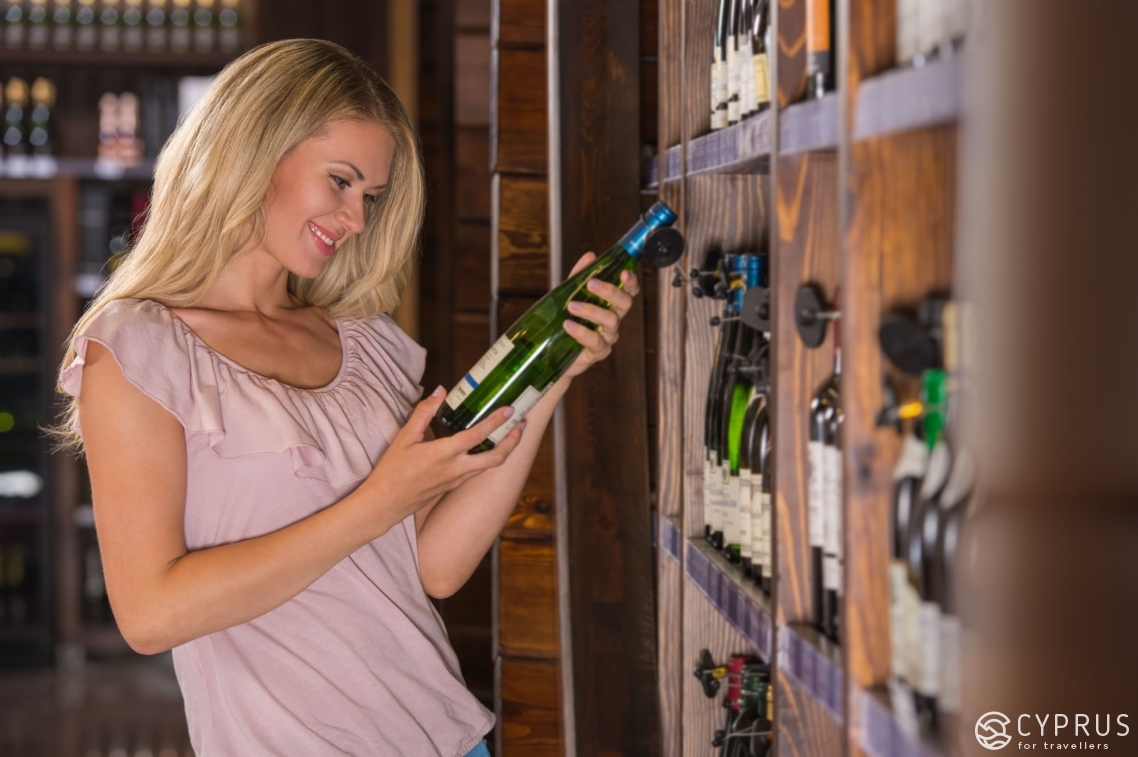
LOEL was founded in 1943 and was the first wine-producing public company in Cyprus with thousands of shareholders who were primarily wine growers and winemakers.
Initially, LOEL’s best products were various wine distillates (brandy, grappa, etc.) and fortified wines produced from indigenous Cypriot grape varieties: Mavro, Xynisteri and, in particular, Muscat of Alexandria (which is used to make one of the most famous historical local wines, Cypriot muscat).
In order to improve the quality of Cypriot wines, the Ministry of Agriculture decided to encourage the replanting of local varieties with imported noble grape varieties. [1] Therefore, LOEL created the first experimental vineyards of these varieties, which went on to earn ninternational recognition. Alongside the «Big Four», LOEL has taken steps to confidently put its country on a par with other well-known world famous wine producers.
Contact details: (+357) 25 579 344; (+357) 25 579 345
Email: loel@zenon.logos.cy.net
More precisely named SODAP — Kamanterena Cyprus Winery, it is currently the largest of the winery co-operatives and has been producing wines in Cyprus since 1947.
One day, a promising team of wine growers decided to organise their wineries. Therefore, the SODAP organisation was formed, which united and took about 10000 employees from 144 villages famous for their vineyards and expertise «under its wing».
SODAP has owned and operated its Kamanterena winery for many years. It is located centrally in the main vineyard region, between the villages of Stroumbi and Polemi. It is one of the most comprehensive and modern wine production facilities in the world where highly-qualified specialist enologists produce both international and local wines using the latest equipment, their vast experience and skills gained over the years, and their unique know-how.
In 1997, SODAP launched a major project called Island Vines / Mountain Vines, which went on to help the cooperative gain and maintain its reputation. It is a synonym for high quality and also led SODAP to victory in various international competitions.
There are tours and excursions of the facilities for those interested.
Tastings are available on weekdays from 8:30 to 15:00. If you wish to visit at the weekend or outside of the opening hours, you’ll have to arrange this in advance.
Contact details: (+357) 26 633 000, (+357) 25 564 605
Email: Mr. Andreas Nicolaides sodap@sodap.com.cy, sodap@cytanet.com.cy
Hadjiantonas (Kolas) Winery Ltd (Parekklisia, Limassol)
With its rich heritage of winemaking and use of the latest equipment, Theodoros Hadjiantonas’ company offers wine-lovers an exquisite range of wines that honour the Cyprus’ historical and cultural wine tradition rooted in antiquity.
Hadjiantonas has won numerous national and international competitions since 2004. His company also took part in the prestigious Decanter World Wine Competition. They state that the secret of success lies in the founder's personality, whose life brims with a passion for travel, and, of course, the company’s vast winemaking experience. All this has led to its eventual discovery and use of the ideal ingredients for quality wines in its production.
Please note: There are group tours and individual tastings available at the Hadjiantonas winery. You’ll learn how the wine is produced all the way from the grape harvest to the grading of the bottles.
At the end of the tour, there’s the chance to try a selection of wines in the winery’s comfortable tasting room. It costs 7 euros per person and includes 8 varieties of wine. A cheese plate costs 18€ for 2 people or 32€ for 4 people.
Contact details: (+357) 25 991199
Email: info@hadjiantonas.com.cy
The Fikardos winery was one of the first private wineries in modern-day Cyprus. It was founded by Theodoros Fikardos in 1990 and its wines are now considered to be some of the best in Cyprus. Here, vinification (the process of turning grape juice into wine by way of natural fermentation under the supervision of a specialist whose goal is to produce a fixed, constant end product) is obtained using a refined method and modern equipment.
Alongside working with international varieties, the winery also focuses on traditional Cypriot ones. It also has its own vineyards in Pano Arodes and Choulou, where it cultivates the indigenous Gannoudi, Maratheftiko and Xynisteri varieties.
Contact details: +357-26949814
Email: info@fikardoswines.com.cy
Other contact details can be found here: www.cypruswines.com

[1] Nama is still available today and enjoys wide popularity. However, it is mostly used in church liturgies for the sacrament of communion.
In terms of taste, it resembles Mavrodafni wine just slightly sweeter with a lower alcohol content. The most famous nama brands include: Byzantino, Mylopotamos, and Roussos. They are produced in Greece.
[2] The press in Lania is both in good condition and working order. Experts believe it is one of the only surviving wine presses from the ancient Greek world, that can still be used. The Department of Antiquities of Cyprus declared the artefact in Omodos (the press) a unique monument of antiquity. It and the mechanism underwent restoration in 1980-84.
[3] There are several wines that have earned worldwide recognition as the high standard of winemaking.
France: Cabernet Sauvignon, a red wine and grape variety. It has a rich flavour and high level of acerbity, with a dominating taste of black currant. New World versions of this wine have a more intense flavour than their European counterparts. It should be served with roasted or smoked red meat dishes. This wine can easily drown out the taste of lighter foods and snacks.
Italy: Chianti is a dry red wine native to Tuscany. Serve at room temperature 18 °C (i.e. as in a wine cellar). It is the ideal accompaniment to Italian cuisine and various cheeses and salamis.
Argentina: Malbec is a wine historically from France with a characteristically rich flavour with notes of ripe cherries, chocolate and spices. It is aged in oak barrels and is best served in a special «Malbec» glass.
Cyprus: Commandaria is a dessert wine made from two grape varieties (Mavro and Xynisteri). Its smooth berry aftertaste combined with hints of honey make it both a wonderful aperitif as well as an excellent accompaniment to desserts (especially chocolate) and, of course, cheese.
[4] You can buy Commandaria in UK here www.beersofeurope.co.uk.
Successful discoveries and new meetings!

